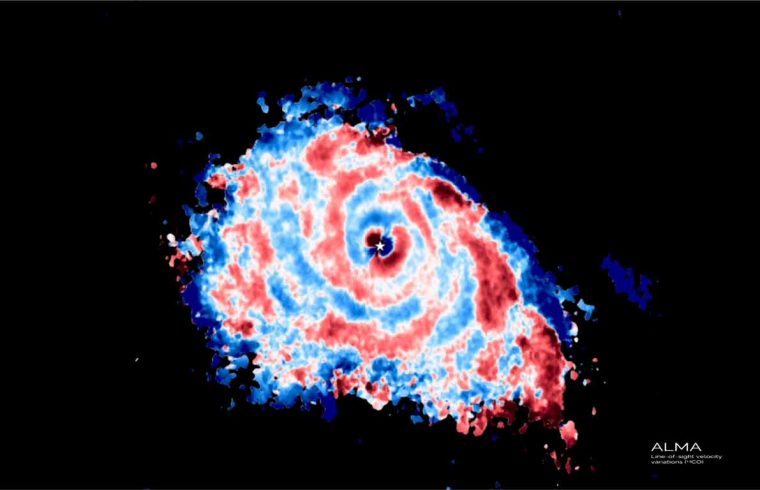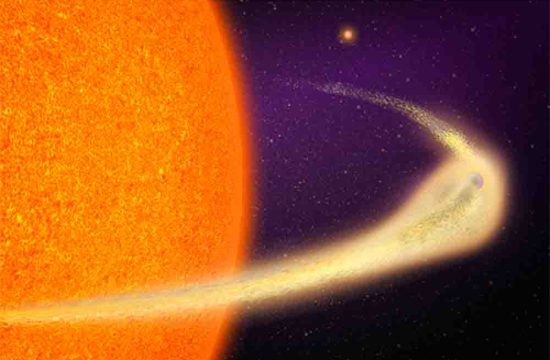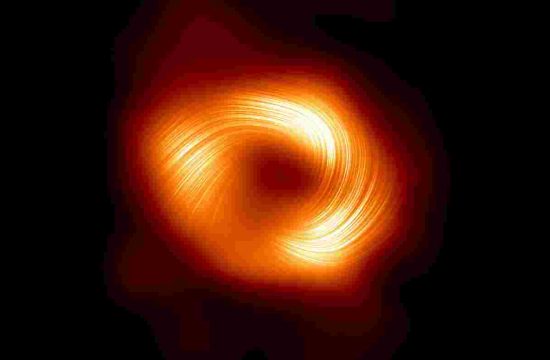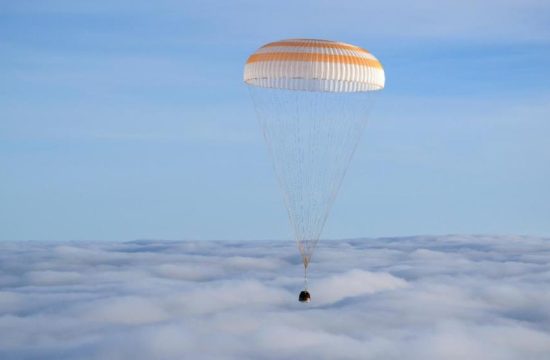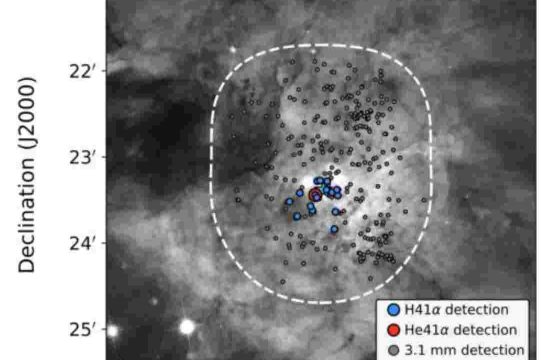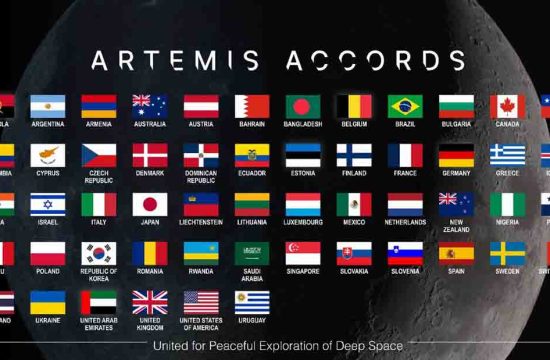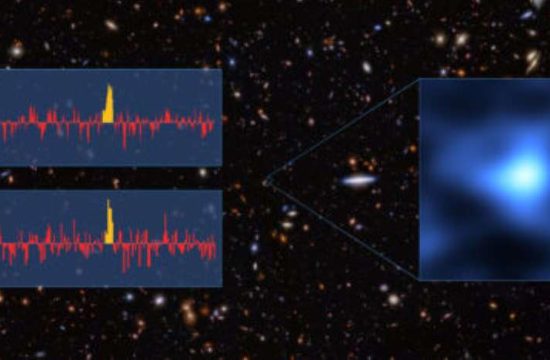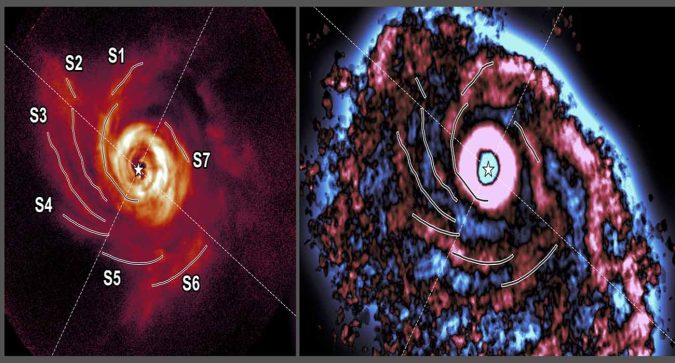
Interferometry of stunning spiral arms around young star reveals gravity’s hand in planet formation.
Traditionally, planet formation has been described as a “bottom-up” process, as dust grains gradually collect into bigger conglomerations over tens of millions of years, from microns to centimeters to meters to kilometers. Alternatively, another theory proposes that planets can form rapidly by a “top-down” process, where circumstellar disk material in spiral arms fragments due to gravitational instability.
In a powerful match-up of technique, instrumentation, and target, an international team of astronomers led by Jessica Speedie, Department of Physics & Astronomy PhD candidate at the University of Victoria (Canada), observed the well-characterized protoplanetary disk around AB Aurigae and found observational evidence that matches the alternative “top-down” theoretical sequence of planet formation.
The Atacama Large Millimeter/submillimeter Array (ALMA), was crucial to the team’s success. “ALMA’s sensitivity and high-velocity resolution enabled us to probe the gas deep within the disk and measure its motion precisely. It was the only tool for the job,” Speedie says.
Astronomers have already spotted several developing protoplanets currently forming in AB Aurigae’s disk region, including one that is nine times more massive than Jupiter. They appear as clumps nestled within a clear structure of spiral arms rotating counterclockwise around the star. The star itself, AB Aurigae, has a mass of approximately 2.4 times that of our Sun and is roughly 4 million years old. The star’s age implies a conundrum: if the “bottom-up” process has not had time to take place, then by what mechanism are the protoplanets forming?
Speedie, her PhD advisor Ruobing Dong, and their team set out to use ALMA to study how the gas in the system’s vast spiral arms is moving. “Disks that are gravitationally unstable should have distinctive ‘wiggles’ in their velocity field, unlike disks that are stable,’’ says Dr. Cassandra Hall, Assistant Professor of Computational Astrophysics at the University of Georgia and co-author of the research.
“Back in 2020, we performed some of the most advanced simulations in the world to predict the existence of this hallmark signature of gravitational instability,” Hall said of the research she led four years ago. “It was clear, it was testable, and it was a bit scary – if we didn’t find it, then something had to be very, very wrong with our understanding of these disks.”
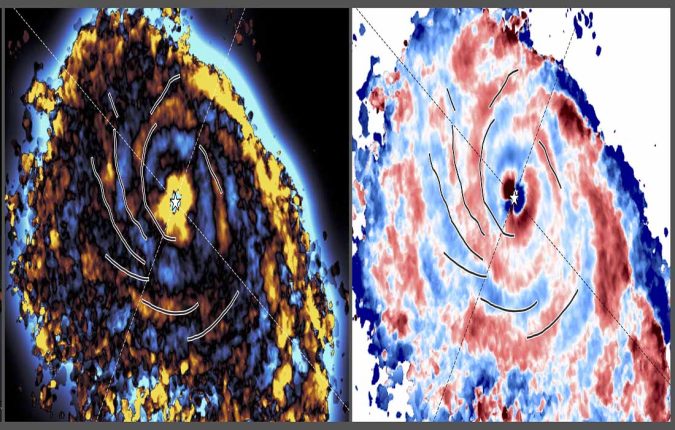
Using the ALMA radio interferometer (12-meter array), Speedie mapped the velocity of 13CO and C18O gases within these vast spiral arms around AB Aurigae and found clear evidence of the predicted “wiggles.” Cristiano Longarini, postdoctoral associate at the University of Cambridge and co-author of the research, explains, “Spiral arms form in the disk when the disk-to-star mass ratio is sufficiently high.
Within those arms, changes in density lead to changes in gravity, which in turn lead to variations in the velocities of gas in the local area around and within the arms. We see these variations in the velocity as wiggles.” The magnitude of these velocity wiggles, Longarini confirmed, can be used to infer the mass ratio between the host star and its surrounding disk material.
“Our detection of gravitational instability in the disk around AB Aurigae is a direct observational confirmation of this ‘top-down’ pathway to planet formation,” Speedie summarizes.
Similar to how an MRI generates images of the brain in “slices,” ALMA interferometry measurements yielded a three-dimensional rectangular “data cube” that mapped gas velocity and position along the line of sight within the protoplanetary disk. By parsing strategically oriented cuts through the data cube, Speedie and her team were able to conclusively identify the telltale velocity wiggle indicating gravitational instability.
“We worked with one of the deepest ALMA observations taken with such high-velocity resolution toward a single protoplanetary disk to date,” Speedie says. “The ALMA data provides a clear diagnosis of gravitational instability in action. There is no other mechanism we know of that can create the global architecture of spiral structure and velocity patterns that we observe.” Adds Speedie in reference to Hall’s predictions, “This is a classic science story of, ‘we predicted it, and then we found it’.
The Hall-mark of gravitational instability.” Her use of ALMA won’t end with this research. As part of the NSF-NRAO-ALMA ambassador program, she is training alongside other postdocs and early career astronomers to share ALMA’s resources and capabilities with the wider astronomy community.


